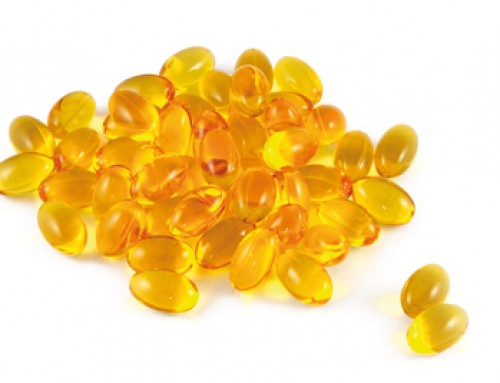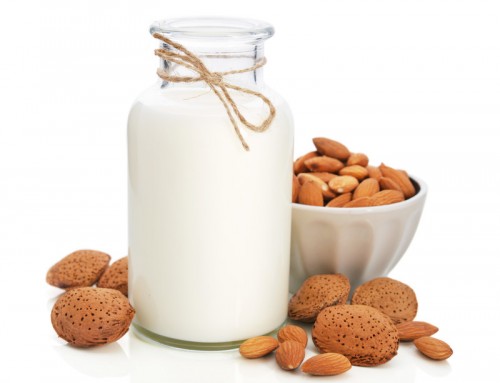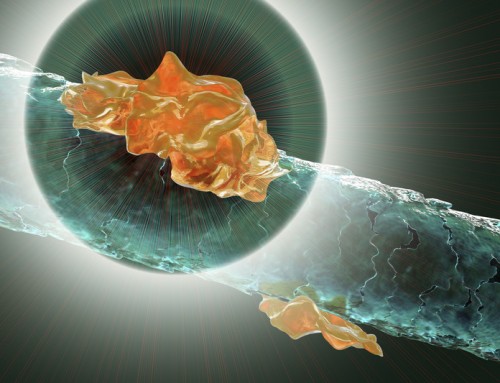ACTIVE INGREDIENTS FOR THERAPEUTIC USE WITH COOLING OR HEATING SENSATION
Therapeutic active ingredients in cosmetic or pharmaceutical products that give a cooling or heating sensation are popular worldwide. They are used for various problems such as painful joints, muscles, ligaments, back, and shoulders etc. These active ingredients are often found in products for rheumatic care in combination with various other active substances. Products containing cooling or heating actives are also extremely popular in sport care. Athletes use these in various preparations for warming up or muscle relaxation. It can be used before and after sports activities. The following are the most popular active ingredients in the field of therapeutic care, among which the most widespread is menthol.
MENTHOL
Menthol, as the most widely used active substance in therapeutic care products was first isolated in the west by Hieronymus David Gaubius in 1771. The production process is carried out by cooling the essential oil from which the menthol crystals are then extracted. It can be also produced synthetically. Menthol is an organic, colorless, waxy crystalline compound with a pungent minty odor. It is monoterpene alcohol with the chemical formula C10H20O. Eight possible stereoisomers are known. Natural menthol nearly always exists as one pure stereoisomer (-)- menthol.
It is considered as a safe substance and can, therefore, be added to food as an additive (aroma).Menthol has been shown to have a chemical effect on TRPM8 receptors, which is reflected in the skin as a cooling sensation. It is important to note that the temperature itself does not change at the point of contact.
A similar effect of relief and cold is felt in the case of inhalation or ingestion. Menthol has also been attributed to analgesic action (anti-pain) as it acts through the selective activation of k-opioid receptors. The pain is relieved for a while in the area where the product containing menthol is applied. In addition to the above, it also has a mild antibacterial effect, making it particularly popular in dental care products.
The antimicrobial activity has been proven on several types of streptococci and lactobacilli. Menthol is found in a very wide range of products, such as anti-pain gels, cough syrups, after-shave tonics, ointments with a cooling effect for muscle relaxation, etc.
INCI: MENTHOL
CAMPHOR
Camphor was traditionally used in parts of the world where it was available. It was mainly used in the area of Sumatra, India, and China in preparations for the treatment of sprains, swelling, and inflammation. In the ancient Arab world, however, camphor was frequently added to perfumes due to its characteristics.
It is obtained from natural sources from the camphor tree (Cinnamomum camphora), an evergreen tree native to Indonesia (Sumatra and Borneo). It can also be produced synthetically from turpentine. Camphor is a flammable, organic, waxy, crystalline colorless compound with a pungent odor. By its chemical composition, it is a monoterpene ketone with formula C10H16O. It has an interesting physical characteristic that it sublimates (it goes directly from solid to a gaseous state).
Camphor is readily absorbed through the skin, where it stimulates nerve endings that are sensitive to cold and heat. If the preparations containing camphor are rubbed gently on the skin the cooling sensation slowly appears, if it is rubbed more roughly and quickly, the heating sensation will also appear. In the skin, it acts on the TRPM8 receptors, where it triggers a cooling sensation. It may also activate heating sensation due to activation of the ion channels TRPV3 and TRPV1.
Camphor is most commonly used as a stimulant, anti-rheumatic, analgesic and rubefacient. Similar to menthol, it is found in a very wide range of products, such as creams with anti-pain properties, aftershave waters, ointments for muscle relaxation, etc.
INCI: CAMPHOR
CAPSAICIN
Capsaicin is an active component of chili peppers belonging to the Capsicum genus. Different capsacinoids are produced as secondary metabolites in various chili peppers. Probably as a defense against certain mammals and fungi. Capsaicin is an extremely powerful irritant for all mammals. In small quantities, it causes a feeling of warmth, and in large quantities it causes an unpleasant burning and painful sensation. Certain areas, such as mucous membranes, are particularly sensitive. It is obtained by extraction from various types of chili peppers. Christian Friedrich Bucholz is the first who prepared an extract of capsaicin in impure form in 1816. Karl Micko succeeded in isolating pure capsaicin in 1898.
Pure capsaicin is an alkaloid of the capsacinoids family with the chemical formula C18H27NO3. It more widely part of the vanilloid family. Physically it is a colorless hydrophobic crystalline, waxy solid. It is often commercially available as a concentrated extract of chili peppers in the form of an oleoresin or powder. Due to the mixture of different carotenoids, these are colored red.
Capsaicin binds to TRP vanilloid receptors of subtype 1, TRPV1. Upon activation, ion channels begin to transfer sodium and calcium ions across the cell membrane. By binding capsaicin to TRPV1 receptors, a similar sensation develops as when exposed to excessive temperature or physical injury. It is important to note that capsaicin does not actually cause temperature rise or any kind of direct tissue damage. The redness that is often present after application of capsaicin preparations on the skin is the body inflammatory response due to neuron stimulation.
Preparations of chili pepper extract or pure capsaicin are used in various preparations as analgesics (painkillers) in concentrations between 0.025% and 0.1%. Various gels, creams and ointments for therapeutic use of painful muscles, joints, ligaments, painful back or sprains, and arthritis-related problems are extremely popular.
INCI: CAPSAICIN
INCI: CAPSICUM FRUTESCENS (CHILI) FRUIT EXTRACT
GINGEROL, ZINGERONE, AND SHOGAOLS
Gingerol is a chemical compound found in fresh ginger chemically known as 6-Gingerol and is a relative of capsaicin and piperine, the compounds which give chilli peppers and black pepper their respective spiciness. The main difference between gingerol and capsaicin is that gingerol is less potent and much less irritant than capsaicin thus more suitable for people with sensitivities. If ginger is exposed to heath the gingerol is transferred via a reverse aldol reaction into zingerone, which is less pungent and has a spicy-sweet aroma.
Dry ginger or mildly heated ginger is also modified. The gingerol undergoes a dehydration reaction forming shogaols, these are about twice as pungent as gingerol. Experiences show that dried ginger is more pungent than fresh ginger.
Ginger has been traditionally used to treat various types of gastrointestinal problems like nausea, colic, upset stomach, gas, bloating, flatulence, diarrhea, loss of appetite and dyspepsia. According to Indian Ayurvedic medicinal system, ginger is recommended to enhance the digestion of food. Topical application of Ginger extract with 6-Gingerol as bioactive component prevents UVB-induced reactive oxygen species (ROS) production and COX-2 expression in-vivo.
One or more clinical trials shows efficacy in treatment of: chronic pain, rheumatoid arthritis, osteoarthritis, or joint and muscle pain.
INCI: ZINGERONE
INCI: ZINGIBER OFFICINALE (GINGER) ROOT EXTRACT
METHYL SALICYLATE
Methyl salicylate is a major component of the wintergreen oil (Gaultheria procumbens). It is used as an active ingredient due to its analgesic (anti-pain), invigorating and moderately heating effect. Anti-inflammatory activity was also reported.
By its chemical composition it is a methyl ester of salicylic acid with the formula C8H8O3. Physically it is a colorless liquid, with a typical sweet medicinal odor. The French chemist Auguste André Thomas Cahours was the first one who isolated it in 1843. Most of the methyl salicylate is produced synthetically, as it is often a component of various flavors and the active ingredient in products for therapeutic use.
Products containing methyl salicylate are used as stimulants, analgesics and rubefacients. Due to its mild heating effect, it is used in combination with other ingredients such as menthol or capsaicin.
Common products are various gels for athletes, especially for muscle regeneration, preparations for painful joints, muscles, ligaments, and massage products for relaxation before and after physical activity.
INCI: METHYL SALICYLATE
INCI: GAULTHERIA PROCUMBENS (WINTERGREEN) OIL
Herbana company uses only the best quality active ingredients with heath and cooling sensation with all required analysis and known origin. All certified by modern internationally recognized ECOGEA standard.





